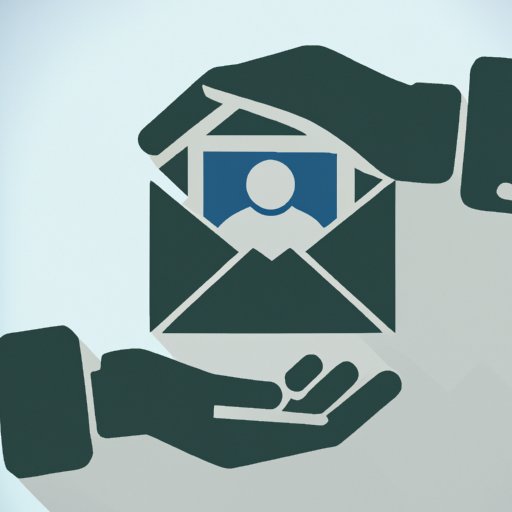
I. Introduction
Email communication is ubiquitous in our personal and professional lives, but writing and sending an effective email can seem daunting. In this comprehensive guide, we will cover everything from the basics of sending an email to best practices for email etiquette and workflow. Here are the seven main topics we will explore:
- Step-by-Step Guide with Screenshots
- Best Practices for Email Etiquette
- Understanding Email Security
- Streamlining Your Email Workflow
- Using Email for Professional Communication
- Email Marketing for Beginners
- How to Write the Perfect Email
II. Step-by-Step Guide with Screenshots
The first step to sending an email is understanding the basic components. These include the subject line, recipient, message body, and any attachments. A clear and concise subject line is important for helping the recipient determine the email’s purpose at a glance. The message body should be well-organized, using paragraphs, headings, and bullet points to convey information effectively.
Next, enter the recipient’s email address in the “To” field. If you are sending an email to multiple recipients, separate each email address with a comma. If you would like to add a recipient to the email without including them in the “To” field, you can add their email address in the “Cc” field (carbon copy) or “Bcc” field (blind carbon copy). The difference between Cc and Bcc is that the former sends a copy of the email to everyone listed, while the latter keeps the recipient’s email address hidden from other recipients.
You can also add attachments to your email by selecting the paperclip icon and browsing through your computer files for the appropriate document or file. Be mindful of the file size, as some email providers have limits on attachment sizes. Finally, press “send” to deliver your email to the recipient’s inbox.
III. Best Practices for Email Etiquette
Email etiquette is essential for maintaining professional relationships. When addressing a recipient, begin with a salutation if the recipient is not a close friend or colleague. Avoid using all-caps in the subject line or message body, as this can come across as aggressive or unprofessional. Before sending an email, proofread it carefully to avoid embarrassing mistakes or typos.
Another important aspect of email etiquette is understanding when to use “reply all.” If your response is meant for the entire group, it is appropriate to use “reply all.” However, if the email only requires a response from a single individual, use “reply” instead.
IV. Understanding Email Security
Email security is crucial for protecting sensitive information. Some best practices for securing emails include using encrypted email providers, setting strong and unique passwords, and being vigilant against phishing scams. It is important to install anti-virus and anti-spam software on your computer to prevent against potential attacks.
V. Streamlining Your Email Workflow
Email can easily become overwhelming without proper management strategies. Some common inbox problems include an overflowing inbox, missing important emails, and spending too much time responding to unimportant emails. To manage your inbox more efficiently, use email clients that have smart sorting and filtering capabilities, such as Gmail’s Priority Inbox. Automating repetitive tasks, such as sorting and archiving emails, can also save time.
Another strategy for streamlining your email workflow is to unsubscribe from unwanted newsletters and spam. This can be done by clicking “unsubscribe” at the bottom of the email or by using a service such as Unroll.me to manage subscriptions.
VI. Using Email for Professional Communication
Email communication is a critical aspect of professional relationships. When crafting professional emails, use a clear and concise subject line that accurately reflects the email’s content. Focus on writing messages that are both clear and concise, and avoid rambling or including irrelevant details. Keep in mind the recipient’s perspective and interests when crafting your message, and use correct grammar and spelling to convey a professional tone.
VII. Email Marketing for Beginners
Email marketing is a useful tool for promoting businesses and products. When starting an email marketing campaign, choose the right platform, such as Mailchimp or Constant Contact, and build an email list. Ensure that your promotional emails are engaging and include a call-to-action to encourage recipients to act on your message.
VIII. How to Write the Perfect Email
The perfect email is one that effectively conveys its intended message and encourages a response from the recipient. Some tips for writing a more engaging and impactful email include using storytelling techniques, personalizing messages to fit the recipient, and including a clear and compelling call-to-action.
IX. Conclusion
In conclusion, effective email communication requires attention to detail and understanding of best practices. By following the tips and strategies outlined in this guide, readers can streamline their email workflow, improve their email etiquette, and craft more effective messages. Remember, your email’s content, tone, and structure can have a huge impact on the recipient’s response, so take the time to craft clear and engaging messages.




